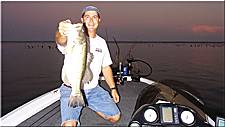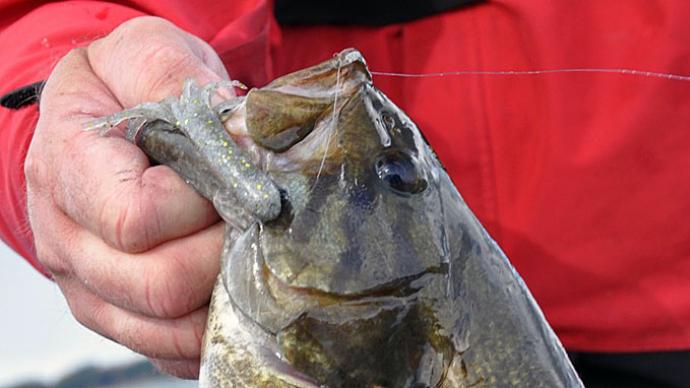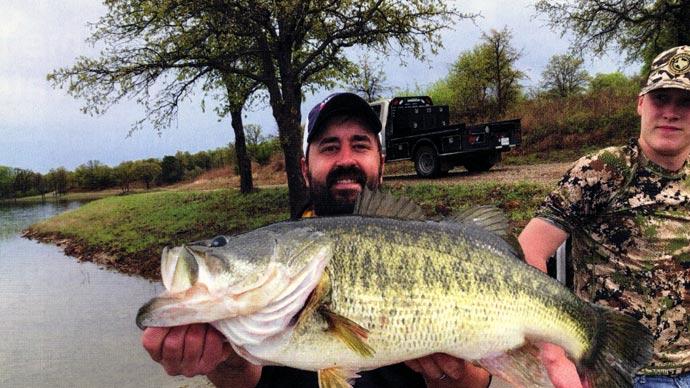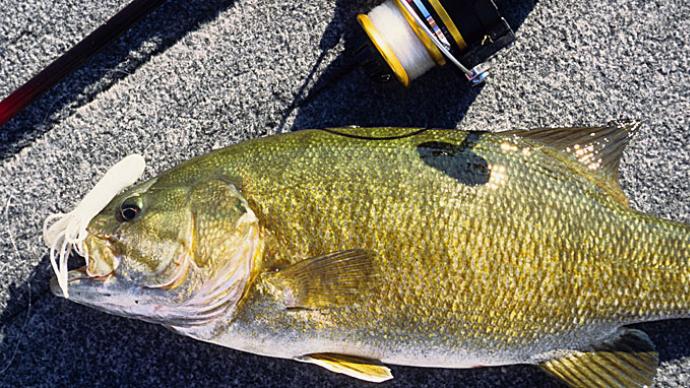
We bass anglers always look for new weapons in our ever-growing tackle arsenal. If it is new or different and catches fish, we want one, two, or three. The tube jig is just such a bait.
Although on the market for several years now, tube baits have changed and are making a big comeback. Bassmaster Classic champion Denny Brauer brought the bait back into the spotlight following his victory using tube baits.
The original tube jigs were 3"-31/2" long. Now tube jigs also come in 4" plus, and are bigger in diameter than before. In addition, they come with salt impregnated in them and in various scents to enhance their fish-catching ability.
Most anglers fish them using a Texas rig. I like the Texas rig with the weights snugged up against the bait rather than slipping up and down the line. This is because I primarily fish them in the brush. The "fixed" weight doesn't seem to hang up as much as one that slides up and down the line. I use a 4/0 or 5/0 wide gap hook when fishing tube jigs.
In my opinion, Strike King Lures and Gambler make the best baits. They are both scented and hold up to the rigors of tournament fishing quite well. Other companies also have a variety of tube baits available. I like to use watermelon and green pumpkin-colored tubes most of the time. In clear water, I like white or shad colored baits. For a different look, I will use some Spike-It dye on the end of my tubes. Sometimes, the slightly different color on the end of the bait will trigger a strike by making it show up better in the water.
Depending on the depth and thickness of the cover I am pitching into, I use a 3/16 - 3/8 ounce weight on a medium heavy or heavy action worm rod. In addition, I use my Abu Garcia Revo high-speed reel with 30-pound P-Line to take up slack quickly for hook sets and to get the fish out of the cover before it gets me hung up. I am convinced that the high-speed reel has helped increase my "bite to catch" ratio.
Last spring, while fishing at a BASS Central Invitational in Eufaula, Oklahoma, I made a discovery that made the difference for me in making a check or not making a check in the tournament. The lake was coming up fast, as much as a foot or more per day. The bite was slow and strange. I was catching a few fish on the tube jig in practice but had trouble getting them to hit it aggressively enough to detect the strike before they dropped it. So on the last afternoon of practice, I tried a McCoy Flanged Tube Rattle.
This rattle is about ¼" in length and big enough to fit snuggly into the tube without falling out. It is large enough to produce adequate sound yet small enough that it does not interfere with setting the hook and getting good hook penetration in the fish's mouth. It is the perfect size for the larger tubes on the market.
The next time you are in the tackle store or department, look for and try some of the big flipping tubes. Use them in the same place as a jig or plastic worm. Start with one or two colors and see how you like them before investing a lot of money. They made a difference for me last spring.
Until next time, enjoy the outdoors.
Tom




